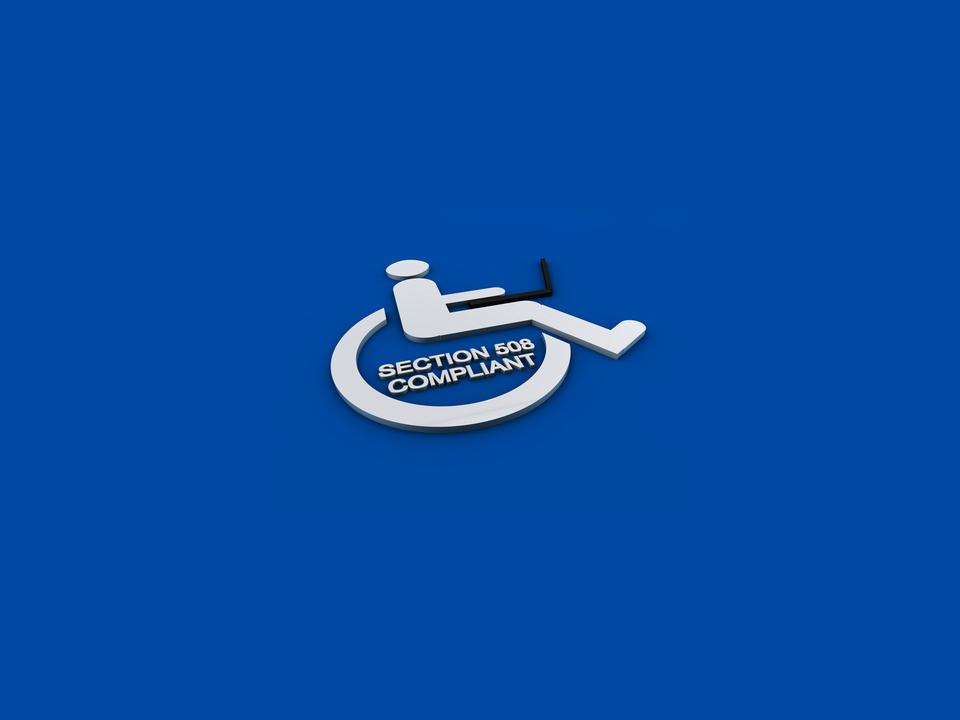 No, it’s not the title of a sci-fi novel. Section 508 is a 1986 amendment to the Rehabilitation Act of 1973, mandating that information technologies used by the federal government should be accessible to people with disabilities. Section 508 is currently in the process of revision (a lot of new technology has happened since 1986), but its provisions on website accessibility are still an important measure. There are some free tools on the internet that will check your website for Section 508 compliance, so it’s not hard to find out if it measures up. You have probably taken great pains to make sure that your physical library site is accessible. Is your online library site also accessible? (Hint: only about a third of Ohio public library websites are.)
No, it’s not the title of a sci-fi novel. Section 508 is a 1986 amendment to the Rehabilitation Act of 1973, mandating that information technologies used by the federal government should be accessible to people with disabilities. Section 508 is currently in the process of revision (a lot of new technology has happened since 1986), but its provisions on website accessibility are still an important measure. There are some free tools on the internet that will check your website for Section 508 compliance, so it’s not hard to find out if it measures up. You have probably taken great pains to make sure that your physical library site is accessible. Is your online library site also accessible? (Hint: only about a third of Ohio public library websites are.)
- In government, accessibility is a team effort (Federal Times | Michael Hardy) “Section 508 was added to the Rehabilitation Act in 1986, and has been revised since then, most notably in 1998, when an amendment changed its prescriptions from non-binding guidelines to binding, enforceable standards. In short, the section requires that electronic and information technology that federal agencies create or purchase must be accessible to people with disabilities unless it would pose an undue burden to do so. The agencies are responsible for ensuring accessibility of their technologies.”
- IMLS website accessibility (Institute of Museum and Library Services) “Inaccessible technology interferes with an individual′s ability to obtain and use information quickly and easily. Section 508 was enacted to eliminate barriers in information technology, to make available new opportunities for people with disabilities, and to encourage development of technologies that will help achieve these goals. The law applies to all Federal agencies when they develop, procure, maintain, or use electronic and information technology. Under Section 508 (29 USC 794d), agencies must give disabled employees and members of the public access to information that is comparable to the access available to others.”
- Section 508, WCAG 2.0, Oh My! (Inside Higher Ed | Tracy Mitrano) “The Rehabilitation Act, which was first promulgated in 1973, applies to students. It is the legislation that has long required schools to make accommodation for students with disabilities. For example, while a private institution in let’s say 2005 did not have to implement full-scale web accessibility, as did the Federal government and its agencies after section 508 came out, it did have to accommodate individual students. In terms of web content, section 508 created a baseline of standards by which a private institution would demonstrate compliance.”
- Designing for disabilities: Section 508 and international accessibility compliance for beginners (Sitepoint | Tara Hornor) “Some non-Federal agencies, while not legally required to be 508 compliant, may also request that a project meet these outlines, especially if the agency provides public services or their target market includes a high amount of people with disabilities. If you have recently acquired a client that is in need of a design that meets Section 508 requirements, don’t be too intimidated. It can sound difficult or scary to learn, but it just requires careful adherence to a set of compliance rules, many of which are already best practices.”
Articles from Ohio Web Library:
- Web accessibility: Is your content ready for everyone? (EContent, March 2015, p.22-28 | Mindy Charski)
- Design standards take federal websites to new levels of usability. (Information Today, Jan./Feb.2016, p.1-29 | Nancy K. Herther)
- Accessibility is more than curb cuts and ALT tags. (Computers in Libraries, Jan./Feb.2016, p.22-24 | jessamyn west)


